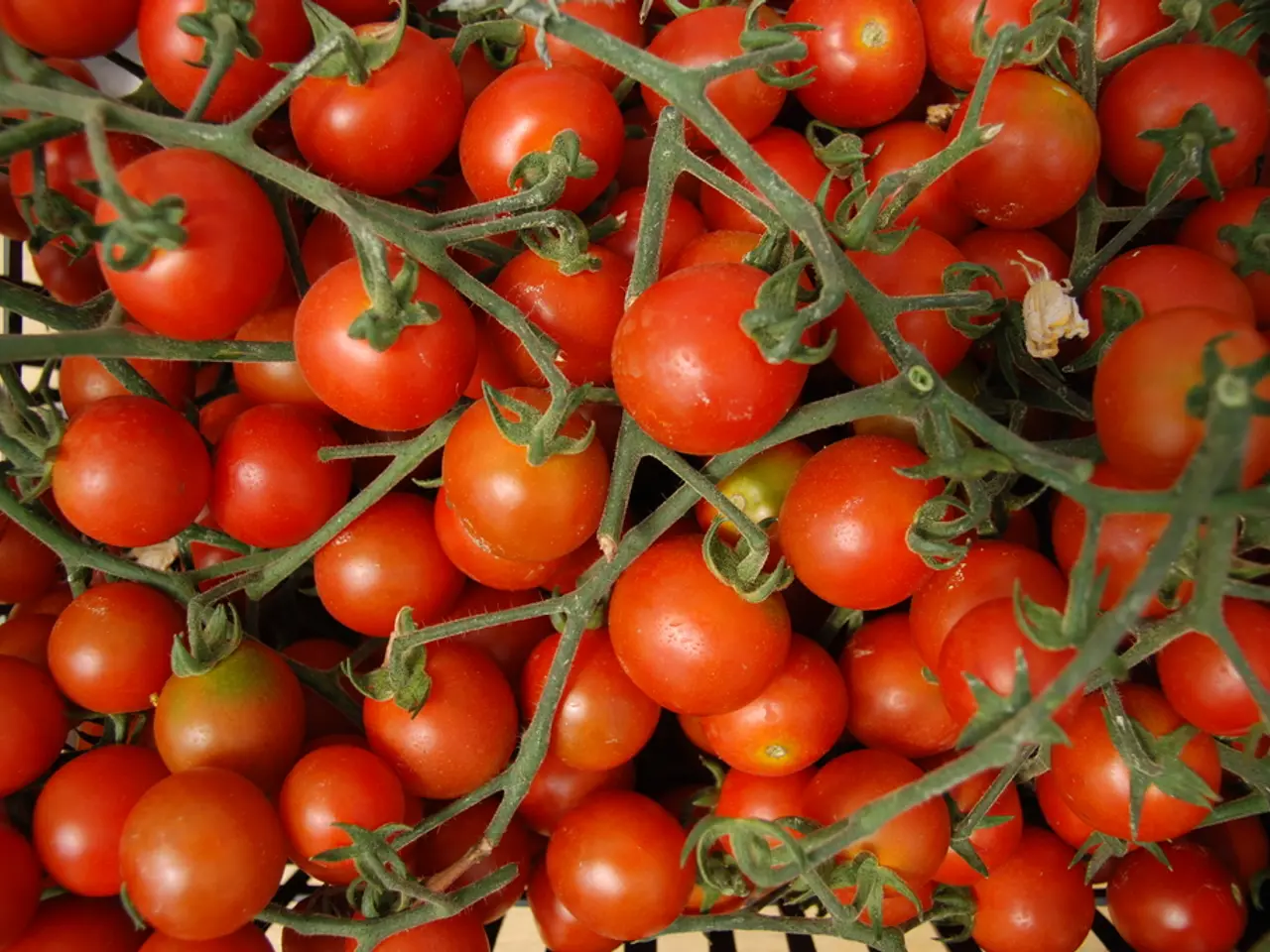Tomato coloring problems and effective strategies to restore ripeness before the arrival of summer salads, elaborated in 4 key points.
In the heart of summer, gardeners may find their tomatoes stubbornly green, despite their best efforts. This article aims to shed light on the common reasons behind this issue and offer practical solutions.
Firstly, it's important to note that tomatoes thrive in warm conditions, but excessive heat can hinder ripening. Ideally, tomatoes ripen best between 68°F (20°C) and 77°F (25°C), and temperatures above 85°F (29°C) can slow or even halt the ripening process [1][2][5].
Prolonged hot periods can also disrupt the production of ethylene, a hormone responsible for fruit ripening [1][2][5]. To combat this, shading can be beneficial. If your tomatoes are grown in a greenhouse, applying shade paint or greenhouse shading can help maintain optimal temperatures [2]. Similarly, moving tomato plants grown in pots to a shadier spot can also be helpful.
Watering practices play a significant role in tomato ripening as well. While consistent watering is crucial, uneven or heavy watering after dry spells can disrupt nutrient and calcium uptake, indirectly affecting fruit health and ripening [3]. It's best to maintain a regular watering schedule and ensure the soil is neither too dry nor too wet.
Disease stress, such as fungal infections like verticillium wilt, can also delay ripening late in the season, particularly during late summer [5]. Keep an eye out for signs of disease and take appropriate measures to treat and prevent infections.
Pruning and plant care can also impact tomato ripening. Removing lower leaves and excessive foliage can improve fruit exposure and health, supporting ripening. Cutting some of the lower leaves off the stem can help increase light and air flow around the plant. Not pinching out a cordon variety could be a reason why tomatoes aren't turning red. Pinching out is a simple pruning technique that encourages flowering and fruiting plants to channel their energy into existing trusses.
Fertilizers can also influence tomato ripening. A fertilizer higher in phosphorus can encourage ripening. Levington Tomorite Liquid Tomato Food is a popular all-rounder for tomato fertilization, available at Amazon.
Lastly, it's worth noting that if you're growing a cordon variety, it's recommended to stop the plant from growing further by removing the growing tip. After a tomato plant has produced five trusses of fruit, the growing tip of the main stem should be removed to encourage ripening of existing fruit [4].
In summary, even with rich soil and watering, too high temperatures remain the most common reason tomatoes do not ripen. Mitigating heat stress by shading, ensuring consistent watering, managing pruning for airflow, and monitoring for disease can help encourage your tomatoes to turn red as the weather cools [1][2][3][5]. Happy gardening!
[1] R. F. Kourik, The Complete Guide to Successful Indoor Gardening (1976) [2] Monty Don, The Complete Gardener (2011) [3] J. I. Rodale, The All-New Rodale's Ultimate Encyclopedia of Organic Gardening (2009) [4] David Domoney, The Ultimate Guide to Growing Your Own (2018) [5] National Gardening Association, Tomato Troubleshooter (2008)
- While focusing on cooking, considering a healthy-lifestyle approach, try incorporating home-grown, ripe tomatoes in your recipes for enhanced flavor and nutritional benefits.
- For individuals interested in food-and-drink gardening, understanding and addressing common issues like heat stress, disease, and proper pruning can lead to a more prosperous tomato harvest.
- In addition to optimizing garden conditions for ripening tomatoes, applying the appropriate fertilizers, such as those higher in phosphorus, can further encourage the growth and maturation of these delicious fruits.




